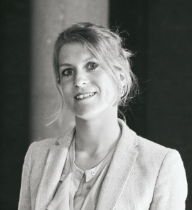Wisdom would be wasted without the tools to apply it. WISE is a UK-based organization dedicated to increasing the participation, contribution, and success of women in the science, technology, engineering, and mathematics (STEM) workforce. On WISE’s quest to spread their wisdom on DEI practices, they found Pointerpro as a pivotal DEI assessment tool.
We talked about it with James Walker – WISE’s Head of Product New Development.

It would have taken us a couple of days, at fastest, to ultimately send reports through. The automated reporting functionality means that we don’t have to do that, and that saves us 12 to 15 hours per report. – James Walker (Head of Product New Development at WISE)
James: No, indeed WISE has a much richer history. We were founded in 1984. So, we recently celebrated our 41st birthday. Our overarching purpose is to enable the promotion, participation and contribution of women within the UK STEM workforce.
James: We do it by helping our customers – to whom we primarily refer as our members – in achieving their goals in gender equity or parity, within their respective STEM industries: from manufacturing, engineering, to science-based STEM related industries in the UK.
The first thing is of course: goal-setting. Our longer-term goal is to reach 30% gender equity in the UK STEM industries by 2030. And we hope to obviously increase that percentage for years to come.
James: I oversee the development of new product opportunities that WISE or our members have identified. We recognize that a lot of WISE’s members are incredibly different: in their industry, their cultural differences, geographical location, their size, etc.
The requirements from one member to another can be varied, so my job is to help the wider team deliver products and services that support our members in those unique aspects on their journey.

Our longer-term goal is to reach 30% gender equity in the UK STEM industries by 2030. – James Walker (Head of Product New Development at WISE)
James: Yes. It’s called the WISE Gender Equity Framework. We launched in October 2024. So it’s fairly new, but its foundation comes from what used to be our “Ten Steps Framework”, which was initially launched in 2014. Ultimately our central framework has grown and become more reflective of the current DEI landscape.
Essentially the framework represents an ideal our member organizations can work towards and use as a tool in their organization to identify how to implement best practice. From internal education, processes, strategy, but also looking at individual employee experience.
We will actually assess the organizations against the framework – that’s designed and built on more than 40 years of DEI experience. And this is of course where the work we have done with Pointerpro comes in.

Our new framework has been designed to be flexible and to evolve with the DEI landscape and the world around us, and ultimately thanks to the functionalities within Pointerpro we can change things quickly. – James Walker (Head of Product New Development at WISE)
James: Sure. There are five pillars that build up the framework as a whole. Beneath each of the five pillars, there are numerous sub-areas that feed into each pillar. So it’s a lot broader than the five pillars may initially depict. However, it needs to be simple enough to understand and communicate around.

James: Data is vital for WISE. We say that it’s fundamental to the success within DEI. A lot of organizations will capture data but ultimately not know what to do with it or what that data means. Others do not even capture data, because they never built up the infrastructure for it.
Data really enables us to understand where an organization currently sits in relation to the framework as a whole, and enables us to track and ultimately benchmark progress.

Data is fundamental to the success within DEI. It enables us to understand where an organization currently sits in relation to the framework. – James Walker (Head of Product New Development at WISE)
James: The attraction pillar looks at inclusive recruitment practices. So we’ll be looking at interview processes, interview panels, CV sifting and things like that. We’re looking to develop inclusive recruitment practices that attract top talent. It’s a huge priority for member organizations – some of them being among the biggest bio-tech or manufacturing and engineering companies in the world, or in the UK.
James: This looks at the elimination of barriers and ensuring equal opportunities are available to women, being gender focused within STEM as we are. We want to ensure women not only are getting fair opportunities to be recruited into positions, but also have the fair and equal opportunity to be promoted and progress through the organization, just like their male counterparts.
James: No matter how fantastic the recruitment processes and the promotion and progress policies are, if you cannot keep talent within your organization then really the efforts and investments of time and money go to waste. So we look at how to nurture individuals, and provide them with the support they need.
We’ll look at many things, like family-friendly policies. For instance, it can be about making sure people ultimately retain their place after their maternity leave and things like that as well. The bottom line is: “So what can we do to support the employees to feel of value and retain them within a given organization?”
James: Engagement really looks at putting words into action: “ How do we drive organizational cultural change and engagement?” Here we look at things like allyship and support among close colleagues but also across other departments, and even more broadly. Inclusive leadership is very important here as well.

The HR diagnostic assessment is a product for all of our members, included with their membership. – James Walker (Head of Product New Development at WISE)
James: Yeah, most definitely. And I think that’s reflective of the change that we’ve seen in the last five to seven years. It’s part of why we felt the need to update our framework. With Covid, homeworking and flexible working policies were mandated into almost every industry around the world. Many organizations have kept them in place ever since. So there has been a huge cultural shift that also represents a big change within the DEI space.
And when we were running yearly DEI surveys with our earlier Ten Steps Framework, we saw a marked improvement in scores across our membership base in 2020 and 2021 because of how many people had adopted flexible and homework policies. DEI is very broad and expansive. Many people, including myself when I first joined here are surprised by that.
James: We used spreadsheets to conduct our DEI surveys. It was primitive compared to the system we now have in place with Pointerpro. Now, it did the job. It got us the data that we wanted but ultimately the user experience was not particularly great. It required us to then pull that data manually from the sheets, which made it an incredibly time consuming task.
Once the surveys had been completed and returned to us, we’d have to process it ourselves and do the data analysis manually to then pull together reports. So the process was incredibly long and inefficient.
How to build automated survey reports with Pointerpro
Here’s a quick introduction on how Pointerpro works, brought to you by one of our product Experts, Chris.
“We use Pointerpro for all types of surveys and assessments across our global business, and employees love its ease of use and flexible reporting.”

Director at Alere
“I give the new report builder 5 stars for its easy of use. Anyone without coding experience can start creating automated personalized reports quickly.”

CFO & COO at Egg Science
“You guys have done a great job making this as easy to use as possible and still robust in functionality.”

Account Director at Reed Talent Solutions
“It’s a great advantage to have formulas and the possibility for a really thorough analysis. There are hundreds of formulas, but the customer only sees the easy-to-read report. If you’re looking for something like that, it’s really nice to work with Pointerpro.”

Country Manager Netherlands at Better Minds at Work
James: It also posed logistical issues, like tracking who had received what exactly, because it was all done through email. Also, filing the completed diagnostic surveys correctly and keeping track of them making sure that everyone was using the correct file storage procedures, so we didn’t lose track of results.
Also when it came to wider pieces of analysis… At the end of each year we organize a Measuring Progress Event, where multiple members submit scores at the event and we look at scores annually across the membership base to see how the collective group of members have evolved… Managing all of that was difficult because everything was so fragmented through this spreadsheet-based, manual process.

Since members are able to use the system easily, they are more likely to complete our HR diagnostic – and complete it quickly as well. That’s really a big benefit. – James Walker (Head of Product New Development at WISE)
James: Within the WISE Gender Equity Framework, we have two diagnostics. They’re two slightly different versions.
The one you refer to is directed at HR professionals or DEI managers. It needs to be completed by one or a couple of individuals who have visibility on policies, processes, procedures and strategy. We ask quite a lot of specific questions that only really those individuals will know, things around interview processes, maternity policies, leave policies, etc.

James: The second version is an employee experience diagnostic, really. It takes a lot of those same questions but translates them into an employee perspective. The whole point is that this enables us to look at the policies and procedures in place from an HR and business-wide perspective, but also how that actually translates into the employee experience.
If the policies are fantastic and very inclusive and align well with our framework but none of the employees really know where they are, how to access them, or how to use them, then that highlights there’s maybe a communication error taking place between those HR professionals and the wider employee base. Then a piece of activity can be planned and programmed to address that. We haven’t transcribed that one into Pointerpro yet, but we’re looking to build it in due course.
James: The primary focus is the HR diagnostic assessment. This is a product that all of our members get included with their membership with us.



The result is really slick and very quick and easy for those individuals who take the assessment to instantly download that report. – James Walker (Head of Product New Development at WISE)
James: Yes, I believe it’s 75 to be exact. That’s quite a large amount more than we dared to use in the past. But also the response options available now in the assessment are way more expansive. And all of that feeds into Pointerpro’s Report Builder, which we use to auto-generate the reports. So, in a minute or less after completion, a respondent gets to download their report.


The fact of using a clean UI system we’ve got through Pointerpro is a massive benefit. – James Walker (Head of Product New Development at WISE)
James: Well, we launched the new Gender Equity Framework in October last year. We unveiled it at our Measuring Progress Event – which is our annual member-wide benchmarking event. That took place in the middle of November. And every submission we had that year was put through the Gender Equity Framework, using that new assessment.
So we had a large number of members complete that and submit their scores into the event. As part of the event we did a breakdown of those collective scores, looking at the five pillars and the sub-areas. And ultimately all of our members felt that the framework was much more reflective of the times, compared to the previous Ten Steps Framework. And that’s even though it may well have taken them longer to take it because it’s much more expansive. They felt that it was worth the effort because ultimately the data that they got out of it – and the data that we got out of it to help support them – was considered very valuable.

In the past we had to share the responsibility of writing reports. So, with Pointerpro, the consistency of our reports has massively improved as well. – James Walker (Head of Product New Development at WISE)
James: Yes, and we actually slightly ran out of time during the event, because we could have talked for much longer on specific points and areas that the data had highlighted and revealed. It was an accommodation we didn’t know we needed to make because the event had the same structure it has had historically. So, that was a kind of hidden positive we didn’t expect to see.
James: Yes, we want to broaden the utilization of WISE as much as we possibly can. For instance, the HR Diagnostic we built in Pointerpro currently, is for the corporate setting. A vast majority of our members are corporate organizations, but we also academic institutions. This is new territory for us and it’s something that we’re looking to test and build out further. So it’s something that we’re looking to test and build out further and, we’ll feature it through the Pointerpro platform in due course. There are a number of key differences in the way that those two different organizational structures will work.
And we also want to look at building out a membership that will target small-to-medium enterprises. So, we’d develop targeted memberships, with a targeted framework and diagnostic tool. Because a lot of those smaller businesses and startup businesses will not have the infrastructure that a large multinational organization or even a longstanding academic institution have.
James: And you.
Are DEI surveys – or any other type of online assessments – also part of the journey you offer your customers, but are you looking to make building, managing, and distributing questionnaires and reports much more time efficient? The Pointerpro team is eager to help you onboard our one-of-a-kind platform. Book a call now.

Want to know more?
Subscribe to our newsletter and get hand-picked articles directly to your inbox



